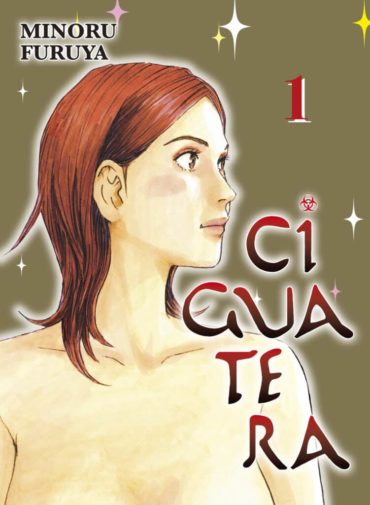Ciguatera, Book 1 (Volumes 1-2) Review
This omnibus collection of a coming-of-age story about a boy seeking freedom is littered throughout with moments of darkness as our hero tries to navigate his way through adolescence.
Ciguatera (the title comes from a form of poisoning caused by eating a kind of fish, hence the use of a biohazard logo as the dot in the “i” on the book’s cover) follows 17-year-old Yusuke Ogino. He has two passions that consume him. The first is to get his own motorbike, seeking the freedom of the open road. The other is to express his love for a girl also taking motorbike lessons, called Yumi Nagumo.
However, both of these ambitions are hard to achieve, partly because of his own nervousness resulting in him being hesitant on being too forward with Yumi, but his main problem is that he is the victim of bullying at school. Yusuke and his fellow bike-obsessed classmate, Takao Takai, are both the constant victims of Taniwaki, the school bully. Yusuke is terrified of letting Taniwaki know of his ambition to get a motorbike and tries to keep it hidden, while Takao gradually lets go of his desire to get a bike, with his sole ambition being to stop Taniwaki’s bullying at any cost.
As the story progresses, Yusuke eventually gets his motorbike licence and to his surprise, it is Yumi who comes forward and expresses her fondness for him. Yusuke is overcome with joy but his natural nervousness makes the relationship somewhat tricky to navigate. Things also become murkier when we learn that Taniwaki does have a caring side, looking after a stray cat, while Takao’s fortunes take a turn for the worse, distancing himself from Yusuke.
The main appeal of Ciguatera seems to be the drama and plot, as Yusuke slowly but surely starts to stand up for himself, as he begins to achieve his ambitions through the course of the first two volumes (the series ran for six tankobon). Meanwhile Takao, who comes from a wealthy family, sees the family fortune diminish, which ultimately leads to the fading away of his relationship with Yusuke. All of the central characters have their own human foibles and frailties, including bullying Taniwaki. Out of all the characters, it feels as if Takao is the creepiest, due to his obsession with defeating Tanikawi. At one point he boasts that he has managed to get some chloroform, “like the stuff they use in rape porn”, to protect himself, in a section that feels irksome.
Regarding the production, nothing about Professor David Boyd’s translation of the story appears to be out of place, although in an interview he said it was difficult to deal with sudden switches between comedic and more realistic scenes. Minoru Furuya’s artwork is good, but nothing is truly outstanding, and it feels as if he is better as a writer. For me personally, what is most interesting about the edition is that while it is released by Kodansha, the credits describe Ciguatera as “a Vertical book”. This is the first Vertical print title I have covered since Kodansha has taken over the label, with the adverts in the back of the manga promoting former Vertical titles which are now being released or are about to be released under the Kodansha label, including The Flowers of Evil and many of Osamu Tezuka’s adult, avant-garde works such as MW and Dororo. These new releases serve as a reminder as to how, in the West at least, many of the bigger labels are coming to dominate the industry.
This opening omnibus has many intriguing moments that may be enough to persuade me to continue reading. While it is not a standout piece of work, there are enough elements to attract the reader that might lead to them picking up the forthcoming volumes.


